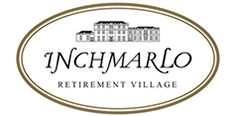When you entrust the care of your loved one to a care home, their safety will always be one of the most important factors of your decision. It can be a challenging and emotional decision, and naturally, you want to be certain that the people looking after them are providing the highest standard of care.
Safeguarding is a critical practice in care homes that focuses on protecting vulnerable individuals from abuse, harm, and neglect. It encompasses everything from creating a safe and supportive environment to empowering residents to speak up if they feel threatened or uncomfortable. At Inchmarlo Retirement Village, safeguarding is at the very heart of how we look after individuals in our care, and we feel it is important to always be transparent about the policy we follow so that you can have peace of mind.
What is safeguarding?
Safeguarding refers to the protection of an individual’s health, safety, and wellbeing when they are under the care of another. Safeguarding protocols ensure the protection of vulnerable people at all times by following legislation and putting their needs first at all times.
How does this apply to care homes?
Safeguarding is a vital component of care for several reasons. First and foremost, it is a legal requirement in the UK under the Care Act 2014, which sets out the responsibility of care providers to protect individuals from harm.
It involves keeping residents safe, content and removed from any situation where they could cause harm to themselves or be at risk of harm from others.
Safeguarding elderly individuals who have chosen to live within care homes comes with additional challenges like preserving independence and autonomy.
Care homes must follow safeguarding legislation, but the very best care homes go above and beyond legal guidance to ensure their patients get the absolute most out of their care.
The Care Act (2014)
The Care Act (2014) outlines the 6 key principles for safeguarding adults at risk. These principles are a statutory requirement and must be followed by all healthcare professionals, including care homes.
They are:
Empowerment: People being encouraged to make their own decisions and give informed consent for decisions made that impact them.
Prevention: Taking action before harm can occur by predicting any future safeguarding concerns and putting reasonable plans in place to manage the risk of harm. This can include informing individuals of the signs of abuse.
Proportionality: Responding to risk in a manner that is proportional to the risk presented.
Protection: Providing support for those greatest in need by encouraging people to report abuse and neglect without consequence.
Partnership: Working with local communities to prevent, detect and report neglect.
Accountability: Taking accountability for safeguarding processes and remaining transparent.
Policy and Procedure
To meet the requirements of The Care Act (2014), care homes must have a safeguarding policy in place that is:
- Clearly written and in line with the Accessible Information Standard so it can be understood by all carers, residents and relations of patients.
- In an easily accessible location.
- Clear and transparent about the arrangements for identifying, managing and responding to safeguarding concerns.
- Equipped with clear instructions on how to report and respond to safeguarding concerns.
- Based on collaboration between residents, carers and family members.
Safeguarding training in care homes
In line with The Care Act (2014), all staff employed directly by the care home must:
- Undergo mandatory safeguarding training as soon as possible, and no later than 6 weeks after their starting date.
- Read and understand the care home’s unique safeguarding policy and procedure during their induction and before they begin work.
It is the responsibility of the care home to ensure that all staff have completed training on safeguarding and that it is implemented.
This is one of the most important aspects of care, as the safety of our residents is always our highest priority. Regardless of their personal care needs or any influencing factors, every care home resident deserves the highest level of care in their final years.
How often is safeguarding policy reassessed?
Care homes must reassess their safeguarding policy and procedure annually. If it is decided that changes need to be made, then all staff must undergo refresher training so they are fully informed of the new process.
At Inchmarlo Retirement Village, we understand that the transition to full-time care can be a difficult one for individuals and their families and we aim to do everything in our power to make this as smooth as possible. We are happy to inform you of our safeguarding policies and procedures prior to you making a decision about whether to entrust us with your loved one’s safety.
We want you to be as involved in the care of your family member as possible, and we can discuss your concerns or requirements for personalised safeguarding procedure.




